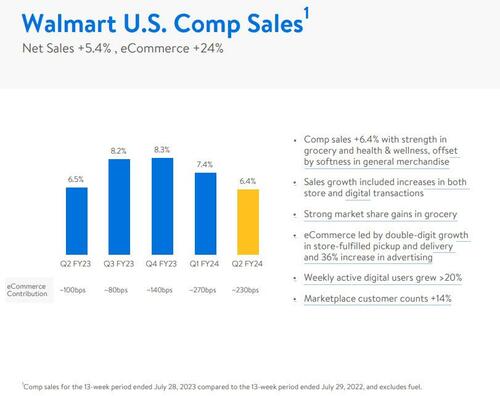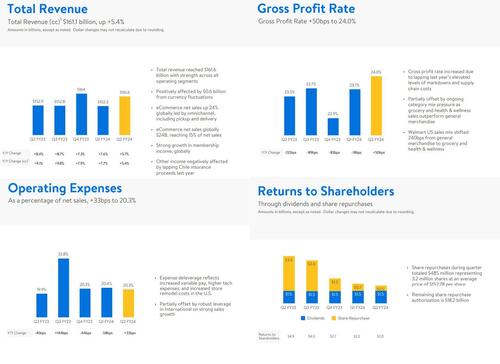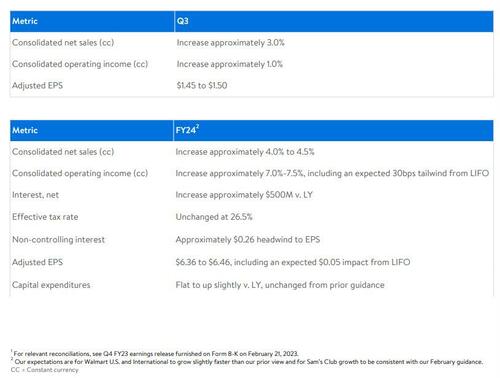


Retail giant Walmart, traditionally viewed as the curtain call to earnings season, reported results that beat on the top and bottom line and also raised its annual profit forecast for the second straight quarter after scoring new sales gains with bargain-hunting US shoppers. A quick look at the company's Q2 results:
Comp sales of 6.4%, while below last year's 6.5% and down from 7.4% in Q1, beat estimates of a 4% increase with "strength in grocery and health & wellness, offset by softness in general merchandise." The company reported that sales growth included increases in both store and digital transactions, and was boosted by "strong market share gains in grocery."
Some other highlights from Q1:
WMT's Gross profit rate rose +40 bps
The company said that "the lapping of last year's elevated markdowns and supply chain costs benefited margins." Prices were "managed" to reflect elevated levels of cost inflation (this is what socialist economists call "greedflation") and was partly offset by unfavorable product mix shifts as grocery and health & wellness increased nearly 240 bps as a portion of sales mix, while general merchandise sales declined.
Operating expenses as a percentage of net sales +28 bps
Operating income $6.1 billion, +7.6%
Reflects increased gross margins and Walmart+membership income, partially offset by expense deleverage
Inventory -7.6%
According to CFO John David Rainey, food revenue continued to rise strongly and Walmart’s general merchandise business was stronger than the company expected at the beginning of the second quarter. As discussed previously, the retailer is also still benefiting from "stepped-up demand among higher-income customers." Translation: Bidenomics is doing so well, more and more higher-income customers have to shot at Walmart.
“We’re gaining share and our value proposition continues to resonate, both for value and convenience,” Rainey said in an interviewy. “The consumer is still spending, but they’re being discerning in their spending.”
It was the strong consumer outlook that helped boost Walmart's guidance:
The improved forecast underscored the resilience of Walmart’s massive grocery business, which is enabling the company to grab more sales even as consumers think twice before buying discretionary goods. Earlier this week, Target and Home Depot reported sharp comparable-sales declines as consumers continued to pull back from nonessential items.
While the stock initially jumped in premarket trading, some downbeat commentary from the CFO during the conference call, in which he warned of "uncertainty in the economy during the rest of the year", hit the stock and it was subsequently unchanged.
The company's Q2 presentation is below (pdf link)





